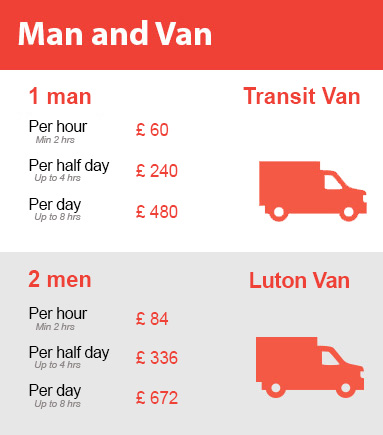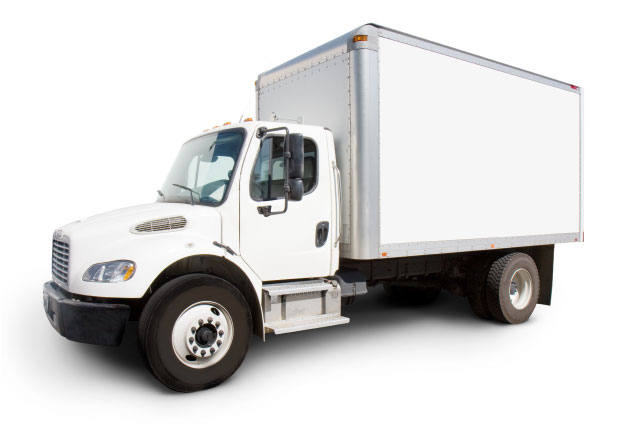Navigate Piano Moving with Confidence: Professional Insights
Posted on 26/06/2025
Navigate Piano Moving with Confidence: Professional Insights
Piano moving can feel like an overwhelming task. With the instrument's delicate structure, impressive weight, and high value, a mishap could mean serious damage or costly repairs. Whether you're planning a local move or relocating across the country, understanding the ins and outs of safe piano relocation will help you preserve your beloved instrument and your peace of mind. This comprehensive guide provides you with expert professional insights and actionable steps to ensure your piano moving experience is smooth, successful, and stress-free.

Understanding the Complexity of Piano Moving
Pianos are not like regular furniture. Their substantial weight--ranging from 300 pounds for a spinet to over 1,000 pounds for grand pianos--combined with their intricate, fragile internal mechanisms, make them one of the most challenging household items to transport. An improper move risks:
- Structural damage to the case or legs
- Internal harm to the strings, hammers, or soundboard
- Personal injury during lifting and transport
- Costly repairs or diminished instrument value
Moving a piano isn't a simple matter of brute strength--it requires planning, skill, and the right equipment. If you're unsure or anxious about the process, hiring professional piano movers is usually the best course of action.
Types of Pianos and Their Moving Requirements
- Upright Pianos: Tall, solid, and heavy. They often need careful tipping and precise maneuvering, especially through doorways.
- Grand and Baby Grand Pianos: Require partial dismantling (like removing the lid, pedals, or legs) to move safely, given their size and awkward dimensions.
- Digital Pianos: Easier to move, but still require cautious handling to avoid tech damage.
Each style presents unique challenges, so the approach for your particular instrument may differ. Understanding these nuances is essential before attempting any piano move.
Should You Move Your Piano Yourself or Hire Professionals?
One of the key decisions you'll face is whether to attempt a DIY move or enlist experts. Piano moving companies exist for good reason--these professionals are trained, insured, and equipped with the proper tools like piano dollies, pads, skid boards, and climate-controlled trucks.
Risks of DIY Piano Moving
- Risk of personal injury--back strains, smashed fingers, or worse.
- Risk of damaging the piano, your home (scratched floors, dented walls), or both.
- Lack of insurance coverage for accidental damage.
- Insufficient equipment for safe handling, especially for heavy or oddly shaped pianos.
While moving a small keyboard is manageable, never underestimate the risks of moving an acoustic piano without help. In the long run, hiring a specialized piano mover is almost always worth the investment.
How to Choose a Professional Piano Moving Service
Not all movers are created equal. Your delicate and valuable instrument deserves a mover with specific expertise, not just general household moving experience. Here's how to select the right team for the job:
What to Look For in a Piano Moving Company
- Specialization: Do they specifically advertise piano moving? Ask for references or testimonials from previous customers.
- Insurance: Ensure they offer full coverage for your piano--both during transport and while handling.
- Equipment: They should use dollies, ramps, padded covers, and locking straps designed explicitly for pianos.
- Training: Their movers should be trained in handling, dismantling, and reassembling pianos--ask about their process and experience.
- Reputation: Check for online reviews, ratings with the Better Business Bureau, and industry certifications.
An experienced team can answer any questions you have and should be transparent about their process. Don't hesitate to request a walkthrough of their approach before booking your piano move.
Preparing for Your Move: Steps for a Smooth Piano Relocation
Proper preparation is essential for a seamless piano moving experience. Here's an actionable pre-move checklist:
- 1. Measure Everything: Measure the piano, all doorways, staircases, and hallways between the instrument and its destination. This ensures there will be no tight squeezes or surprises on moving day.
- 2. Clear the Pathway: Remove furniture, rugs, or obstacles along the moving path. Keep pets and children away during the move.
- 3. Plan for Environmental Factors: Avoid moving in extreme heat, cold, or rain if possible--humidity and temperature swings can damage your piano.
- 4. Secure the Internal Parts: Close and lock the keyboard lid to keep the keys secure. For grands, remove and protect the lid and pedals.
- 5. Communicate with Movers: Provide detailed access information, including stairs, elevators, steep driveways, or narrow entries.
Taking these preparatory steps will help your piano moving specialists operate efficiently and prevent unnecessary delays on move day.
How Professional Piano Movers Work: Step-by-Step Process
Understanding the professional process offers peace of mind and insight into why expert piano transportation is so valuable:
- Assessment: The crew examines the piano, the moving environment, and anticipates any challenges.
- Protection: Using high-quality blankets and padding, the team wraps all exposed surfaces, focusing on corners, legs, and delicate areas.
- Dismantling (If Needed): For grand and baby grand pianos, movers will carefully remove and protect the legs, pedals, and music stand.
- Securing the Instrument: The piano is lifted onto a specialized dolly or skid board, secured with non-abrasive straps to prevent shifting.
- Careful Navigation: Movers slowly guide the piano through the property, cautiously angling through tight spaces and down stairs if necessary.
- Loading and Transit: The piano is loaded onto a climate-controlled truck, and immobilized securely for safe transportation.
- Reassembly and Placement: At the destination, the process is reversed, with final adjustments and positioning as specified by the owner.
This attention to detail ensures maximum protection for both your piano and property at every step.
After the Move: Piano Tuning, Acclimatization & Care
Even with the best movers, the physical and climatic changes associated with relocation can affect a piano's sound. After the move, here's what to expect and what to do:
- Allow for Acclimatization: Let your piano sit in its new location for at least 2-3 weeks before scheduling a tuning. This gives the wood and internal components time to adjust to the new climate.
- Monitor Humidity: Keep the humidity consistent (ideally between 40-50%)--use a humidifier or dehumidifier if needed. Pianos are highly sensitive to moisture fluctuations!
- Schedule a Professional Tuning: A professional tuner will recalibrate the instrument to account for any settling that occurred during the move.
- Inspect for Damage: Check the exterior and keys for any scratches or marks. If you notice anything, report it to your moving company promptly if they're insured.
With proper post-move care, your piano will be ready to fill your new space with beautiful music.
Piano Moving Cost: What to Expect
Wondering how much professional piano moving services cost? The price can vary based on several factors:
- Piano Type and Size: Grand and concert pianos cost more to move than upright or spinet models.
- Distance: Local moves cost less than long-distance or interstate relocations.
- Complexity: Stairs, tight spaces, or difficult entryways add time and risk, raising the price.
- Insurance and Service Level: Full-value insurance and white-glove services increase overall costs, but provide important protection.
On average, expect local piano moves to range from $200-$600 for uprights and $400-$1200 for grands. Long-distance moves may run $1,000-$3,000+ depending on mileage and complexities. Always request a written quote before booking your move.

Tips for a Successful, Stress-Free Piano Move
- Don't Skimp on Experience: Choose a mover dedicated to handling musical instruments.
- Ask Questions: Communicate with your moving team--ask about their techniques, insurance, and what you can expect.
- Prep Your Home: Safeguard your floors with protective coverings, especially if it's raining or snowing.
- Don't Move Alone: If attempting a DIY relocation (not recommended), always use at least 3-5 strong adults, and never drag the piano across floors.
- Protect The Instrument: Store your piano in a stable, climate-controlled environment both during and after the move.
- Keep Details Updated: Provide your movers with accurate addresses and any unique obstacles ahead of time.
Conclusion: Move Your Piano with Confidence
Successfully moving your piano doesn't have to be a nerve-wracking experience. By understanding the unique challenges involved, choosing the right professional piano movers, and preparing thoroughly, you can navigate the relocation process with confidence. Remember: the investment in professional expertise not only protects your cherished instrument but also ensures your own safety and the well-being of your home.
For your next piano move, take these professional insights to heart. With the right approach, you can enjoy the sound of your piano in its new home without the worries of damage, delays, or discordant notes. If you're searching for peace of mind and flawless execution, trust your piano to the hands of true piano-moving professionals.
Ready to Move Your Piano?
Contact a reputable piano moving specialist today and make your journey as melodious as your music!





